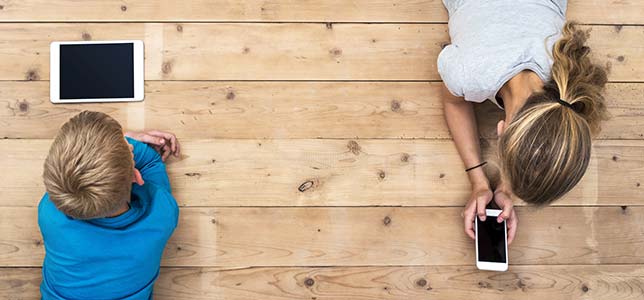Speech Recognition Apps Propel Literacy
- By Dian Schaffhauser
- 02/13/18

Can voice recognition apps that are as common as Siri Assistant and Cortana help kids learn to read? That was the question posed by a literacy researcher who wanted to see whether the use of speech recognition programs in early elementary classrooms would give students who struggle with reading a boost in their efforts.
Elizabeth Baker, a professor of literacy studies at the University of Missouri, observed eight first graders as they participated in structured speech recognition-supported program on iPads and iPhone four days a week for five months. According to a paper published on the results, students who used the tools averaged a 97.4 percent accuracy rate on post-study reading tests, in which participants were asked to read a culmination of the words they had used in earlier compositions.
Baker looked at the use of this technology as a replacement for the standard "language experience approach," in which students dictate to teachers and then read what they've dictated. The transcriptions become reading materials for the students. The challenge with that approach, wrote Baker, "is that it is time-consuming for teachers," especially those in first- and second-grade classrooms, which may be filled with students "who struggle to independently read or write."
The use of speech recognition on mobile devices, however, allows the kids "to dictate their compositions without waiting for a teacher or being subjected to group dictation," Baker noted. "If speech recognition is available on mobile devices, then the mobile device becomes the proverbial pen," allowing students to control what they learn to read. "That can be very empowering," she said.
The students who used the apps in their reading practice seemed more eager to try new words and phrases, the researcher found, possibly, she suggested, because the apps let them make mistakes and develop as readers without "any embarrassment." Also, they seemed undeterred by the inaccuracies that cropped up. In one example, a student wrote her own version of "Mary Had a Little Lamb," with a final line: "The dog would say, hello." However, the app transcribed that last line as: "Follow dog I don't know that for." The student recognized the inaccuracy and didn't copy it. When the researcher dictated the same sentence, the student recognized the accurate transcription and copied that.
"Speech recognition technologies are supportive of the learner because it allows them to use personally, culturally relevant grammar," Baker said in a press release on the project. "Children all have different backgrounds, and this technology allows them to learn to read while using their own frame of reference."
The researcher said she believes the same technology would be useful to help older students improve their reading abilities. The caveat: Many apps lack safety features that would make them appropriate for school use. "There's the possibility that a student says a phrase and an inappropriate word will pop up," she said. " One teacher may not be able to monitor the screens for all the students; an app that has a child safety button would make this learning method more practical."
"Apps, iPads, and Literacy: Examining the Feasibility of Speech Recognition in a First-Grade Classroom" was published in Reading Research Quarterly.
About the Author
Dian Schaffhauser is a former senior contributing editor for 1105 Media's education publications THE Journal, Campus Technology and Spaces4Learning.